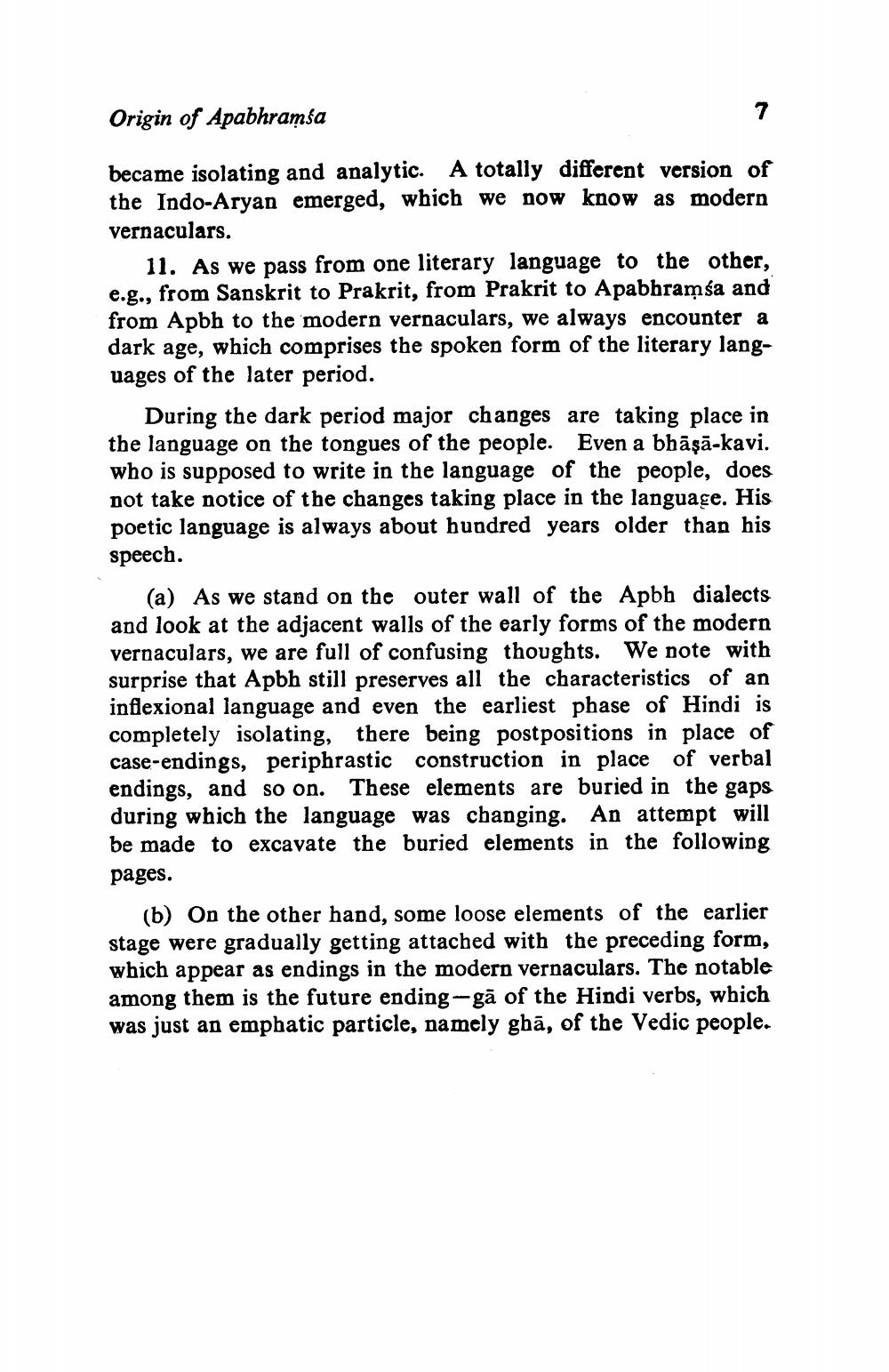________________
Origin of Apabhramsa
7
became isolating and analytic. A totally different version of the Indo-Aryan emerged, which we now know as modern vernaculars.
11. As we pass from one literary language to the other, e.g., from Sanskrit to Prakrit, from Prakrit to Apabbramsa and from Apbh to the modern vernaculars, we always encounter a dark age, which comprises the spoken form of the literary languages of the later period.
During the dark period major changes are taking place in the language on the tongues of the people. Even a bhāṣā-kavi. who is supposed to write in the language of the people, does not take notice of the changes taking place in the language. His poetic language is always about hundred years older than his speech.
(a) As we stand on the outer wall of the Apbh dialects and look at the adjacent walls of the early forms of the modern vernaculars, we are full of confusing thoughts. We note with surprise that Apbh still preserves all the characteristics of an inflexional language and even the earliest phase of Hindi is completely isolating, there being postpositions in place of case-endings, periphrastic construction in place of verbal endings, and so on. These elements are buried in the gaps during which the language was changing. An attempt will be made to excavate the buried elements in the following pages.
(b) On the other hand, some loose elements of the earlier stage were gradually getting attached with the preceding form, which appear as endings in the modern vernaculars. The notable among them is the future ending-gā of the Hindi verbs, which was just an emphatic particle, namely ghā, of the Vedic people.




